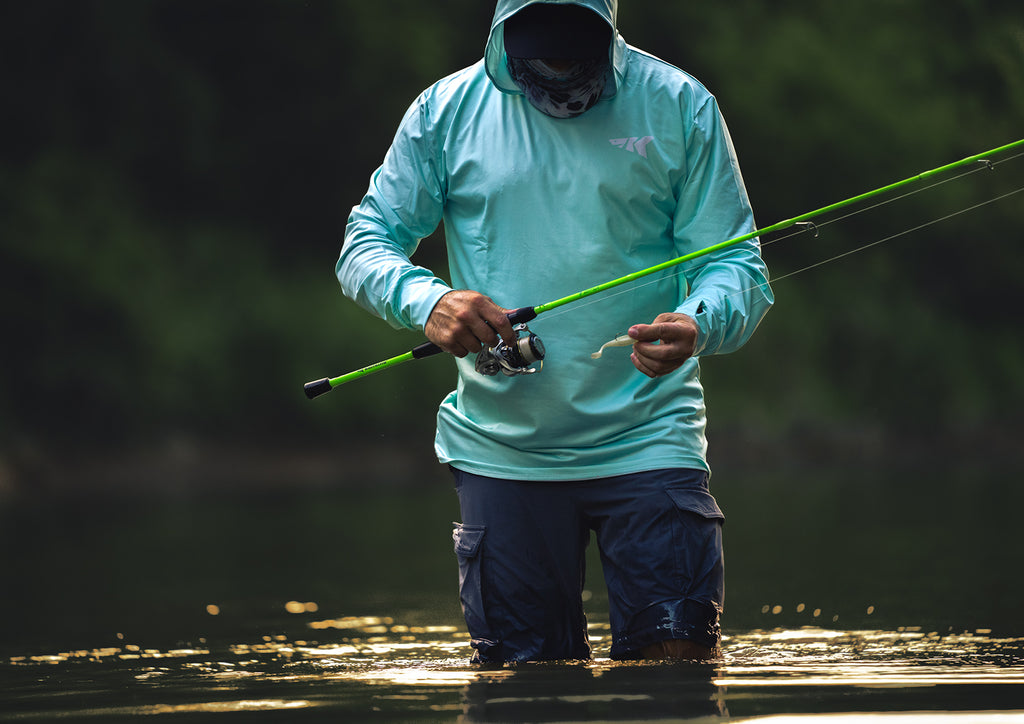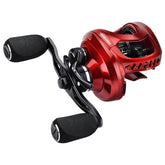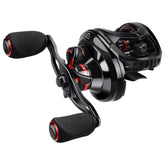
How To Set Up A Fishing Line
Setting up a fishing line can change dramatically based on the type of fishing you are doing. Starting from the most basic rigs, an angler can tie their line directly to a jig or hook. This is most used for jerk baits, frogs or hard swim baits. For saltwater applications for fishing such as slow pitch jigs, surface irons, poppers or hard metal baits like colt snipers and heavy tube baits. For live bait applications, the hook is tied normally to fluorocarbon and a live bait is attached and casted out to swim freely away from the boat. A question that one may have is transitioning from the braid on the reel to the monofilament fishing line that may be used to tie on your hook is a common practice. Some great knots for this is a Royal Polaris (RP) knot, reverse Albright, FG or Uni to Uni knot. I personally use the FG knot but understand that it takes much practice and can easily slip on the user if not done right. When starting to tie braid to nylon I would suggest to start with the uni to uni and move on from there if you wish. Each have their own benefits and do not vary that much in strength.
From the most basic we can go to a rig with a bit more complexity. A float rig is used for fish that suspends off the bottom and an angler is interested in setting the depth of which to hang the bait from the top. This rig is especially effective with bluegill, crappies, trout and catfish. To complete this rig you tie monofilament line to the hook and attach a bobber above the hook on the line. The distance from the hook to the bobber is the distance you are interested in having the hook hang from the surface of the water. If you are looking to cast the line farther, there are things called weighted bobbers or just crimp on a split shot sinker under the bobber. If your bait is floating, you can lower the sinker closer to the hook but not directly above the hook. Just a bit above to not cause attention to the sinker but still holds the bait at depth.
Carolina Rig

When I was kid thought the first rig, I learned for fishing was the Carolina Rig. I consider this to be a brilliant set up and is the most general rig used for so many kinds of fishing. If you are going to learn one rig, this is the one. The setup is simple an egg sinker is used that has a hole through the middle. Slide the line through the sinker and tie the monofilament line through the sinker to a swivel. For a slightly better rig an angler can put a bead in between the sinker and the swivel. This does two things, protects the knot of the mono line to the swivel from the sliding weight and produces a bit or a click at times when you cast and the line moves around in any current there is around. From the swivel you tie a leader on that is normally about 12”-14” from the swivel to a hook. If you are using a floating bait like a dough on artificial bait, the length of your leader is how much the bait will float off the bottom. If the bait you use is a chunk bait or a bait that is more likely to sink, it will sit on the bottom and wait for a fish to slurp it off the floor and swim away. Now this is where the Carolina rig is simply magical. The fishing line should move freely as a fish takes your bait, in doing so the angler should have time to notice the line become tight and move the tip of the rod. Grabbing the rod there is time to set the hook and with any luck you will catch the fish! An effective indicator can be used on the rod from a fancy electronic device that will make a noise when fishing line is moved through it to a simple bell that can be put at the end of a rod that jingles when the tip of the rod moves.
Drop Shot / Dropper Loop

For those that drop directly to a reef or to the bottom from a pier you may use a very popular rig called a dropper loop. This is also known as a drop shot rig to many also. This rig is tied with either monofilament line or even better, with KastKing Fluorocote line which is a combination monofilament covered with fluorocarbon. This combination adds durability and makes the line even less visible for any fish with exceptional eyesight. With this set up, a monofilament or fluorocarbon fishing line has a heavy sinker, normally a torpedo style to the bottom of the rig. About 12” above the sinker another knot can be used to suspend a hook off the bottom. Normally a larger hook is used here like a 2/0 or 3/0 size to accommodate the mouth of a deep dwelling fish. With a knot such as a dropper loop you can actually tie another knot with a hook is your local regulations permit to have two hooks and you have what’s called a double dropper loop rig. Another variation comes with switching the position of a single hook dropper loop and the sinker. In this variation called a reverse dropper loop, the sinker is tied in the middle of the rig and the hook is tied to the end. This helps the hook sway more in current which provide a more natural motion and entices a great bite. Gotta be a bit careful though, the swaying of the hook and bait can cause the hook to get tangled and stuck on rocks if allowed to stay at the bottom for too long.












